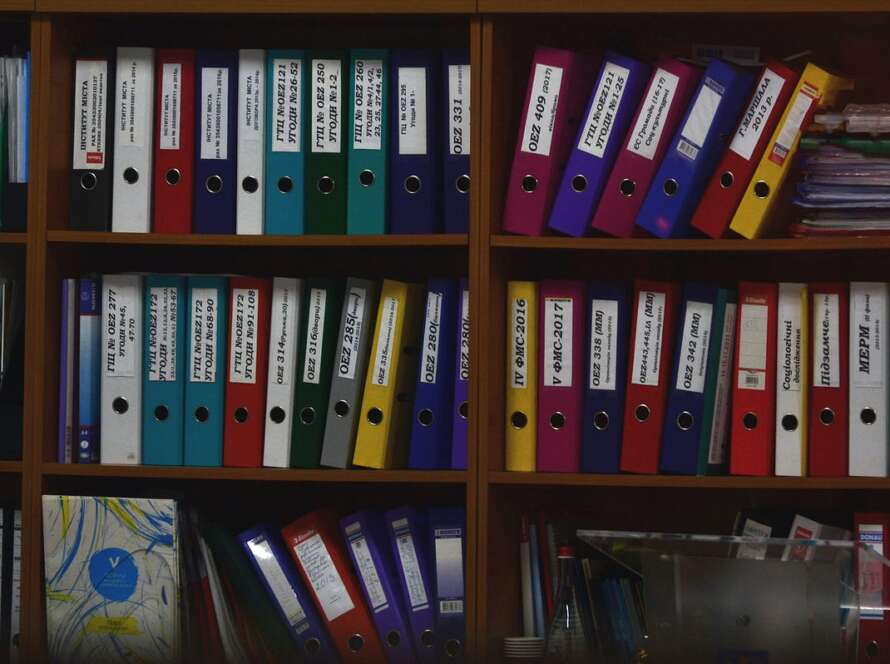Before we finish up this already long post, I wanted to highlight a few of the other features we built into the model and provide some training code examples for those interested in developing their own inpainting model.
Monte Carlo Dropout
Unlike traditional Bayesian methods, we do not directly produce a physically-based uncertainty estimate using a U-Net. To get a rough idea of model confidence and stability, we decided to introduce a dropout at inference layer to the model based on the work of Gal and Ghahramani, 2016 which allows us to generate a distribution of inpainted predictions for each test case. These distributions allow us to produce confidence intervals for each inpainted pixel, and further refine our estimates to regions that model is more certain of when inpainting. An example of this is shown below in Fig. 17.
We typically use N=50 iterations per case, and as we can see above, the areas with the highest uncertainty are typically cloud edges and cloud gaps, as the model often hallucinates when positioning these features.
Training Statistics
Model training for this project was completed on two sets of hardware, including a Linux-based GPU computing cluster on Microsoft Azure, and a high-performance desktop running Windows 11 (additional system details in Table 1). An extensive Bayesian hyperparameter sweep was also performed over the course of 2 days. Further, batch normalization is applied along with early stopping (n=20), dropout and L2 regularization (ridge regression) to help mitigate overfitting during the training process. Learning rate decay is also applied at two epochs (450 and 475), allowing the model to more easily settle into a local loss minima near the end of the training phase. All training runs and hyperparameter sweeps are saved online using the Weights & Biases cloud storage option, to monitor model learning rates and stability over time.
Example Code
A link to the GitHub is here: https://github.com/frasertheking/blindzone_inpainting
However, I wanted to provide an overview of the actual 3Net+ implementation (with variable depth) in Tensorflow below for those interested in playing around with it.
def conv_block(x, kernels, kernel_size=(3, 3), strides=(1, 1), padding='same', is_bn=True, is_relu=True, n=2, l2_reg=1e-4):
for _ in range(1, n+1):
x = k.layers.Conv2D(filters=kernels, kernel_size=kernel_size,
padding=padding, strides=strides,
kernel_regularizer=tf.keras.regularizers.l2(l2_reg),
kernel_initializer=k.initializers.he_normal(seed=42))(x)
if is_bn:
x = k.layers.BatchNormalization()(x)
if is_relu:
x = k.activations.relu(x)
return xdef unet3plus(input_shape, output_channels, config, depth=4, training=False, clm=False):
""" Prep """
interp = config['interpolation']
input_layer = k.layers.Input(shape=input_shape, name="input_layer")
xpre = preprocess(input_layer, output_channels)
""" Encoder """
encoders = []
for i in range(depth+1):
if i == 0:
e = conv_block(xpre, config['filters']*(2**i), kernel_size=(config['kernel_size'], config['kernel_size']), l2_reg=config['l2_reg'])
else:
e = k.layers.MaxPool2D(pool_size=(2, 2))(encoders[i-1])
e = k.layers.Dropout(config['dropout'])(e, training=True)
e = conv_block(e, config['filters']*(2**i), kernel_size=(config['kernel_size'], config['kernel_size']), l2_reg=config['l2_reg'])
encoders.append(e)
""" Middle """
cat_channels = config['filters']
cat_blocks = depth+1
upsample_channels = cat_blocks * cat_channels
""" Decoder """
decoders = []
for d in reversed(range(depth+1)):
if d == 0 :
continue
loc_dec = []
decoder_pos = len(decoders)
for e in range(len(encoders)):
if d > e+1:
e_d = k.layers.MaxPool2D(pool_size=(2**(d-e-1), 2**(d-e-1)))(encoders[e])
e_d = k.layers.Dropout(config['dropout'])(e_d, training=True)
e_d = conv_block(e_d, cat_channels, kernel_size=(config['kernel_size'], config['kernel_size']), n=1, l2_reg=config['l2_reg'])
elif d == e+1:
e_d = conv_block(encoders[e], cat_channels, kernel_size=(config['kernel_size'], config['kernel_size']), n=1, l2_reg=config['l2_reg'])
elif e+1 == len(encoders):
e_d = k.layers.UpSampling2D(size=(2**(e+1-d), 2**(e+1-d)), interpolation=interp)(encoders[e])
e_d = k.layers.Dropout(config['dropout'])(e_d, training=True)
e_d = conv_block(e_d, cat_channels, kernel_size=(config['kernel_size'], config['kernel_size']), n=1, l2_reg=config['l2_reg'])
else:
e_d = k.layers.UpSampling2D(size=(2**(e+1-d), 2**(e+1-d)), interpolation=interp)(decoders[decoder_pos-1])
e_d = k.layers.Dropout(config['dropout'])(e_d, training=True)
e_d = conv_block(e_d, cat_channels, kernel_size=(config['kernel_size'], config['kernel_size']), n=1, l2_reg=config['l2_reg'])
decoder_pos -= 1
loc_dec.append(e_d)
de = k.layers.concatenate(loc_dec)
de = conv_block(de, upsample_channels, kernel_size=(config['kernel_size'], config['kernel_size']), n=1, l2_reg=config['l2_reg'])
decoders.append(de)
""" Final """
d1 = decoders[len(decoders)-1]
d1 = conv_block(d1, output_channels, kernel_size=(config['kernel_size'], config['kernel_size']), n=1, is_bn=False, is_relu=False, l2_reg=config['l2_reg'])
outputs = [d1]
""" Deep Supervision """
if training:
for i in reversed(range(len(decoders))):
if i == 0:
e = conv_block(encoders[len(encoders)-1], output_channels, kernel_size=(config['kernel_size'], config['kernel_size']), n=1, is_bn=False, is_relu=False, l2_reg=config['l2_reg'])
e = k.layers.UpSampling2D(size=(2**(len(decoders)-i), 2**(len(decoders)-i)), interpolation=interp)(e)
outputs.append(e)
else:
d = conv_block(decoders[i - 1], output_channels, kernel_size=(config['kernel_size'], config['kernel_size']), n=1, is_bn=False, is_relu=False, l2_reg=config['l2_reg'])
d = k.layers.UpSampling2D(size=(2**(len(decoders)-i), 2**(len(decoders)-i)), interpolation=interp)(d)
outputs.append(d)
if training:
for i in range(len(outputs)):
if i == 0:
continue
d_e = outputs[i]
d_e = k.layers.concatenate([out1, out2, out3])
outputs[i] = merge_output(input_layer, k.activations.linear(d_e), output_channels)
return tf.keras.Model(inputs=input_layer, outputs=outputs, name='UNet3Plus')



